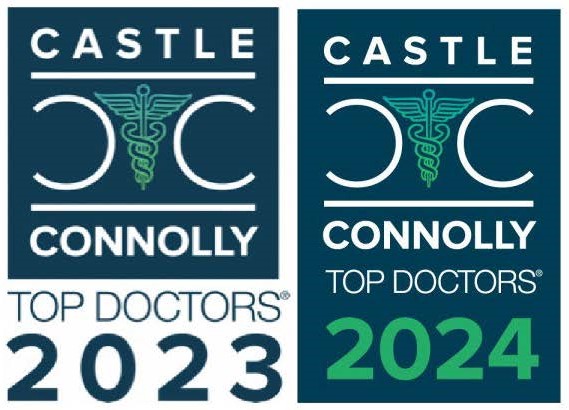
Smoking is one of the leading causes of preventable death, responsible for over 8 million deaths worldwide annually, according to the World Health Organization (WHO).
Despite the known health risks, many smokers struggle to quit, with only few succeeding without the aid of professional help or medication. Traditional methods, such as nicotine replacement therapy and counseling, are often met with mixed results.
However, a promising new approach — repetitive Transcranial Magnetic Stimulation (rTMS) — is gaining attention for its potential to help smokers achieve long-term cessation by targeting the brain’s decision-making and reward systems.
Why Is Smoking So Hard to Quit?
Quitting smoking is one of the hardest challenges a person can face. But why? What makes it so difficult to break free from cigarettes when the health risks are so well-known?
What Makes Nicotine So Addictive?
Nicotine is the primary substance in tobacco responsible for addiction. When you smoke, nicotine is absorbed into the bloodstream and quickly reaches the brain. There, it stimulates the release of dopamine — a chemical responsible for pleasure and reward.
The problem is once addicted, the brain craves more nicotine to maintain these feelings. According to the Centers for Disease Control and Prevention (CDC), around 53% of adult smokers in the U.S. say they want to quit, but only 8% successfully do so each year. The addiction is not just about nicotine, though — that’s only part of the equation.
How Does Smoking Affect the Brain?
Nicotine addiction affects the brain’s chemistry, changing how it works over time. Smoking alters brain functions, particularly in areas that control mood, memory, and impulse regulation. This leads to cravings, irritability, and anxiety when trying to quit.
These withdrawal symptoms make staying smoke-free challenging. Cravings can feel overwhelming and difficult to ignore. When stressed or bored, smokers often turn to cigarettes for comfort or relief. These habits make breaking free from nicotine even harder.
But the challenge: the brain builds up a tolerance to nicotine, making the situation more challenging. Over time, smokers require more nicotine to achieve the same effects. This creates a deeper cycle of addiction, making it even harder to quit.
Smokers often find themselves stuck in a loop, needing nicotine to feel normal. At the same time, they also want to quit for the sake of their health. It’s a difficult and frustrating cycle to break.
What Role Does Habit Play?
Beyond addiction, smoking becomes a deeply ingrained habit. For many, lighting up a cigarette is part of their daily routine. After meals, with coffee, during breaks — smoking is often tied to specific activities or environments. These triggers can be powerful reminders to smoke, even when a person is trying to quit.
For example, a smoker might associate driving with smoking, making it nearly impossible to drive without a craving. Breaking these patterns involves more than just removing nicotine from the body. It also requires reprogramming the mind to avoid triggers.
Why Do So Many Smokers Relapse?
Relapse is common to those people trying to quit smoking. It takes most smokers several attempts to quit before they succeed. Nicotine addiction, withdrawal symptoms, and psychological triggers make quitting a tough challenge. It’s an uphill battle for many trying to break free.
One common reason for relapse is stress. Smoking is often a coping mechanism. And without a replacement, stress can lead people back to it. Nicotine withdrawal adds to the challenge by triggering negative moods. This makes quitting even harder to manage.
Another reason is the social aspect of smoking. Smokers often have friends or coworkers who smoke, making quitting feel lonely. Without support, it’s easy to slip back into old habits. It’s hard to stay strong without willpower and support.
What Is rTMS and How Does It Work?
rTMS is a form of brain stimulation therapy that uses magnetic fields to influence the activity of neurons in specific areas of the brain. rTMS is FDA-approved to treat conditions like major depression and OCD. It’s also showing promise for helping with addiction and anxiety. This therapy offers a non-invasive way to support mental health.
rTMS is a less invasive treatment compared to electroconvulsive therapy (ECT), as it doesn’t need anesthesia or surgery. A magnetic coil is placed on the scalp near the forehead. The device sends out repetitive magnetic pulses. These pulses travel through the skull. They typically reach certain areas of the brain, like the prefrontal cortex.
How Do rTMS Work?
The key to understanding rTMS is how it influences the brain’s neural circuits. rTMS works by altering the electrical activity in targeted regions of the brain. In conditions like depression, certain brain areas become underactive. rTMS stimulates these regions, boosting neural activity and promoting healthier brain function.
rTMS works by changing the brain’s electrical activity in specific areas. In depression, some brain regions become less active. rTMS stimulates these areas, improving brain function.
Treatment usually takes place over multiple sessions, each lasting 30-40 minutes. Patients may have rTMS sessions five days a week for several weeks. This repeated stimulation helps the brain maintain healthier activity levels even after the treatment is finished.
How Does rTMS Affect the Reward System?
One interesting use of rTMS is its impact on the brain’s reward system. This system controls our feelings of pleasure and motivation. It’s also linked to behaviors such as addiction, eating habits, and mood.
rTMS targets regions like the prefrontal cortex, involved in impulse control and decision-making. Stimulating this area helps balance the brain’s response to rewards and cravings. It reduces the urge to engage in addictive behaviors.
rTMS affects the reward circuitry by decreasing the brain’s heightened sensitivity to addictive substances or behaviors. The reward system includes key parts of the brain like the prefrontal cortex, nucleus accumbens, and ventral tegmental area (VTA). These areas are influenced by dopamine, a chemical that makes us feel good. For instance, when you enjoy a great meal or accomplish a goal, dopamine is released, creating a sense of reward.
In addiction, the brain’s reward system becomes overactive, needing larger doses or more frequent engagement for the same satisfaction. Correcting this imbalance helps reduce cravings and relapse rates. rTMS encourages healthier responses to natural rewards, such as social interactions or personal achievements. This means less reliance on addictive substances or actions for pleasure.
The Study: rTMS as a Tool to Target Delay Discounting in Smokers
One of the newer methods to quit smoking is Repetitive Transcranial Magnetic Stimulation (rTMS). A recent study, “Transcranial Magnetic Stimulation for Long-Term Smoking Cessation: Preliminary Examination of Delay Discounting as a Therapeutic Target and the Effects of Intensity and Duration,” studies how rTMS can target the brain’s decision-making processes — specifically, delay discounting.
What is Delay Discounting, and Why Does It Matter in Smoking?
Delay discounting means choosing a smaller reward now instead of a bigger reward later. This is a common issue for smokers. The immediate pleasure from smoking often feels better than the long-term benefits of quitting.
As a result, many smokers struggle to resist the urge. The idea of delay discounting explains why smokers focus more on the quick satisfaction of nicotine rather than the future rewards of better health. It’s hard for them to wait for those health benefits.
This study examined whether rTMS can help smokers make better long-term decisions, making quitting easier. It works by targeting the brain’s reward system and improving impulse control. This could help smokers resist cravings and focus more on long-term health. rTMS may be a useful tool to support quitting smoking.
Key Findings: Duration and Intensity of rTMS
In this randomized study, participants received rTMS at varying intensity levels (1 or 2 sessions per day) and duration (8, 12, or 16 days of treatment). The left dorsolateral prefrontal cortex, a region of the brain critical for decision-making and impulse control, was stimulated. The study found that:
- Increasing the duration of rTMS increased the odds of long-term smoking cessation by 7-8 times.
- Increasing the intensity of treatment doubled the likelihood of abstinence from smoking.
- Longer treatment time helped reduce delay discounting rates. This allowed smokers to wait for rewards instead of seeking immediate satisfaction, resulting in healthier long-term choices.
The study found that how long treatment lasted had a bigger effect on quitting smoking than how intense it was. This suggests that the gradual buildup of rTMS over time may be key to making lasting changes in behavior. It’s a hopeful result for those looking for long-term ways to stop smoking, as rTMS may slowly change the brain’s reaction to nicotine cravings.
Why Choose the TMS Institute of Arizona for Smoking Cessation?
The TMS Institute of Arizona offers effective treatments to help people quit smoking. We use rTMS therapy to focus on areas of the brain linked to addiction and impulse control. Our goal is to provide evidence-based care for lasting results.
Expertise in Treating Addiction
We understand that quitting smoking is not just about willpower — it’s about changing how your brain responds to cravings. Our team is trained to use rTMS to help people quit nicotine by targeting the brain’s pathways involved in addiction. This treatment works to reduce cravings and improve impulse control. It can make quitting easier and boost your chances of long-term success.
Personalized rTMS Therapy Plans
The TMS Institute of Arizona offers personalized rTMS therapy tailored to your needs. Whether you need shorter or longer sessions, we create the most effective plan for you. Backed by the latest research, we know the right treatment duration and intensity are key to success. Our approach is designed to optimize your outcome and help you reach your goals.
A Supportive Environment
You’ve got the strength to quit smoking, and we’re here to help every step of the way. At our clinic, we offer a supportive space where your health comes first. With rTMS therapy and personalized care, we’ll guide you toward a nicotine-free life. Let’s work together to make this change — connect with us when you’re ready.
References:
Brandt, L., Chao, T., Comer, S. D., & Levin, F. R. (2020). Pharmacotherapeutic strategies for treating cocaine use disorder—what do we have to offer? Addiction, 116(4), 694–710. https://doi.org/10.1111/add.15242
Shevorykin, A., Carl, E., Mahoney, M. C., Hanlon, C. A., Liskiewicz, A., Rivard, C., Alberico, R., Belal, A., Bensch, L., Darian Vantucci, Thorner, H., Marion, M., Bickel, W. K., & Sheffer, C. E. (2022). Transcranial Magnetic Stimulation for Long-Term Smoking Cessation: Preliminary Examination of Delay Discounting as a Therapeutic Target and the Effects of Intensity and Duration. Frontiers in Human Neuroscience, 16. https://doi.org/10.3389/fnhum.2022.920383
CDCTobaccoFree. (2024, July 25). Smoking Cessation: Fast Facts. Centers for Disease
Control and Prevention. https://www.cdc.gov/tobacco/data_statistics/fact_sheets/cessation/smoking-cessation-fast-facts/index.html
World. (2023, July 31). Tobacco. Who.int; World Health Organization: WHO. https://www.who.int/news-room/fact-sheets/detail/tobacco
Important Disclaimer: The research insights shared here are for educational purposes only. Please consult a healthcare provider for individualized medical advice.













